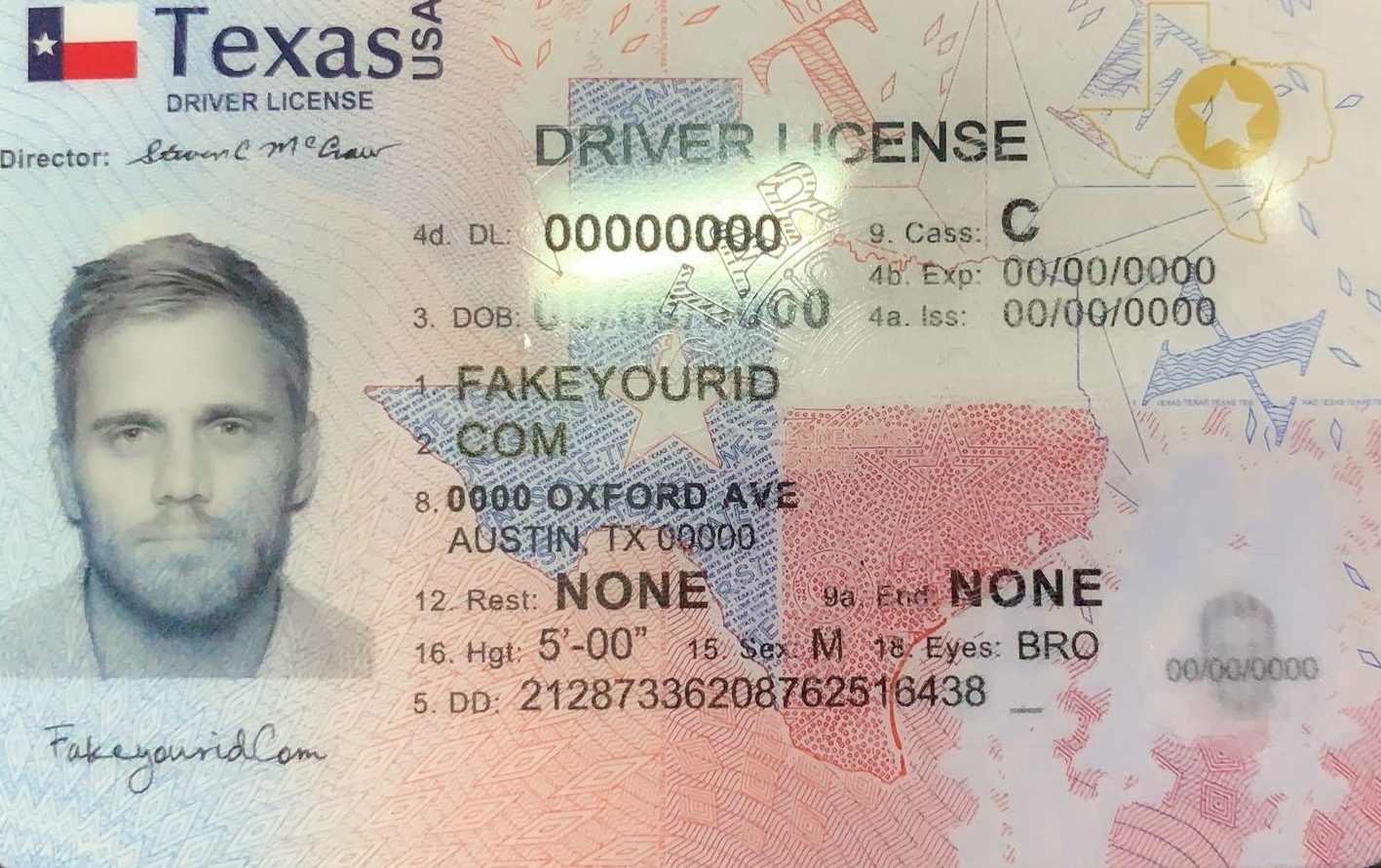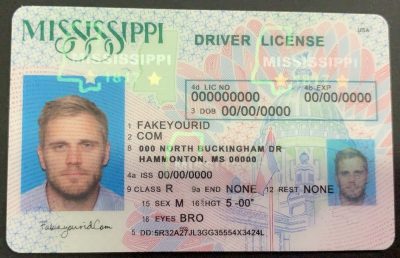Pharmacy chains play a crucial role in ensuring the safety and security of their operations, especially when it comes to verifying driver’s licenses to prevent the use of fake ones. The improper use of fake driver’s licenses can lead to serious consequences, such as the illegal procurement of medications, identity – theft – related issues, and potential threats to public health and safety. Here are the common methods and processes pharmacy chains use for driver’s license verification.
Visual Inspection
The first step in the verification process is often a visual inspection. Pharmacy staff are trained to look for various tell – tale signs of a fake driver’s license. They check the overall appearance of the license, including its texture. A genuine driver’s license usually has a specific tactile quality. For example, many real licenses have raised text and graphics, while fake ones may have a flat or inconsistent surface.
Another important aspect is the examination of the holograms. Most modern driver’s licenses feature holographic images or patterns. These holograms are difficult to replicate accurately. Pharmacy employees are taught to look for the correct placement, clarity, and color – shifting properties of the holograms. If a hologram appears blurry, misaligned, or has a strange color quality, it could be a sign of a fake license.

The photo on the license is also carefully scrutinized. The photo should match the person presenting the license in terms of facial features, hair color, and general appearance. Additionally, the photo on a real license is usually of high quality, with clear and sharp details. A pixelated or low – quality photo may be a red flag.
Magnetic Stripe and Barcode Scanning
Many pharmacy chains use scanning devices to read the information stored on the magnetic stripe or barcode of a driver’s license. The magnetic stripe contains encoded data such as the licensee’s personal information, date of birth, and license expiration date. When scanned, this data is compared with the information visible on the license itself. Any discrepancies can indicate a problem.
Barcodes, on the other hand, may contain more detailed or encrypted information. Scanning the barcode can also be used to cross – reference the license details with a database. Some pharmacy systems are integrated with state – or national – level databases that store driver’s license information. If the scanned data does not match what is expected in the database, it could be a sign of a fake license.

ID Verification Software
Pharmacy chains are increasingly turning to ID verification software to enhance their verification processes. These software solutions use advanced algorithms to analyze the physical features of the driver’s license, such as the font style, spacing of text, and design elements. They can also detect signs of tampering, such as altered photos or text.
Some ID verification software can perform facial recognition. It compares the photo on the driver’s license with the face of the person presenting it. This adds an extra layer of security, as it helps to ensure that the license is being used by the actual licensee. The software can also check for known fake license patterns or characteristics that have been identified in previous fraud cases.
Cross – Referencing with Databases
Pharmacy chains often cross – reference driver’s license information with various databases. State motor vehicle department databases are a primary source. These databases contain accurate and up – to – date information about driver’s licenses issued in that state. By comparing the license details provided by the customer with the information in the state database, pharmacy staff can confirm the authenticity of the license.
Some pharmacy chains also use national or multi – state databases that aggregate driver’s license information. These databases can be useful in cases where a customer presents a license from another state. They can help identify if the license has been reported as lost, stolen, or revoked. If the license information does not match what is in these databases, it is likely that the license is fake or being used fraudulently.
Employee Training
Pharmacy chain employees are provided with comprehensive training on driver’s license verification. This training includes understanding the different types of driver’s licenses issued by various states, as well as the security features of each. Employees are taught how to conduct a thorough visual inspection, how to use scanning devices and ID verification software effectively, and how to cross – reference with databases.
Training also includes scenarios of common fake license techniques and how to handle suspected fakes. Employees are trained to be observant and to follow a standardized verification process for every customer who presents a driver’s license. Regular refresher courses are often provided to keep employees updated on the latest trends in fake license prevention and new security features of driver’s licenses.
Common Problems and Solutions
Problem 1: Low – Quality Visual Inspection Skills
Some pharmacy employees may not be well – trained in visual inspection of driver’s licenses. As a result, they may miss important signs of a fake license, such as a poorly – made hologram or an inconsistent photo quality.
Solution: Provide in – depth and ongoing visual inspection training. This can include hands – on training with real and fake licenses, so employees can learn to recognize the differences. Use visual aids and case studies to illustrate common fake license features. Additionally, encourage employees to ask for help or advice from more experienced colleagues when in doubt.
Problem 2: Malfunctioning Scanning Devices
Scanning devices used to read magnetic stripes or barcodes on driver’s licenses may malfunction. This can lead to inaccurate readings or the inability to scan the license at all, causing delays in the verification process and potentially allowing fake licenses to go undetected.
Solution: Regularly maintain and calibrate scanning devices. Have a schedule for device checks and repairs. Provide employees with alternative verification methods, such as manual cross – referencing with databases, in case of device malfunctions. Also, keep spare scanning devices on hand to minimize downtime.
Problem 3: Database Connectivity Issues
When cross – referencing driver’s license information with databases, pharmacy chains may face connectivity issues. This can prevent them from accessing the necessary data to verify the license’s authenticity, leaving them in a difficult position when trying to determine if a license is fake or not.
Solution: Implement redundant network connections to ensure continuous access to databases. Have a backup plan in place, such as using cached data (if possible) or contacting the database provider directly for assistance. Train employees on how to handle database connectivity issues and what steps to take to ensure verification can still be carried out as accurately as possible.
Problem 4: New Types of Fake Licenses
Fraudsters are constantly coming up with new ways to create fake driver’s licenses. These new types of fakes may bypass existing verification methods, such as having more advanced holographic replicas or sophisticated photo – altering techniques.
Solution: Stay updated on the latest trends in fake license production. Collaborate with law enforcement agencies and other industry partners to share information about new fake license types. Continuously update ID verification software and training programs to address these new threats. Regularly review and improve verification processes to adapt to emerging fraud techniques.
Problem 5: Customer Resistance
Some customers may be resistant to having their driver’s licenses thoroughly verified. They may feel that the process is invasive or time – consuming, and may become argumentative or uncooperative.
Solution: Train employees on effective customer service and communication skills. Explain to customers the importance of license verification for their safety and the safety of the general public. Be polite and patient when dealing with resistant customers, and try to make the verification process as quick and unobtrusive as possible. Provide clear information about the verification procedures in advance, such as on signs in the pharmacy or on the pharmacy’s website.
Problem 6: Inconsistent Verification Processes
Across different pharmacy locations within a chain, there may be inconsistent verification processes. Some employees may be more thorough than others, leading to potential security risks if fake licenses are able to slip through at less – vigilant locations.
Solution: Implement a standardized verification process across all pharmacy locations. Provide clear written guidelines and training materials. Conduct regular audits to ensure that employees are following the proper procedures. Share best practices among locations and recognize and reward employees who consistently follow the verification process accurately.
Problem 7: Lack of Integration between Systems
The various verification tools used, such as scanning devices, ID verification software, and databases, may not be well – integrated. This can lead to inefficiencies in the verification process, as employees may have to manually transfer data between different systems or may encounter compatibility issues.
Solution: Invest in integrated verification systems that can communicate with each other seamlessly. Work with software and hardware vendors to ensure that all components of the verification process work together harmoniously. Provide employees with training on how to use the integrated system effectively to streamline the verification process and improve accuracy.
Fake ID Pricing
unit price: $109
| Order Quantity | Price Per Card |
|---|---|
| 2-3 | $89 |
| 4-9 | $69 |
| 10+ | $66 |


